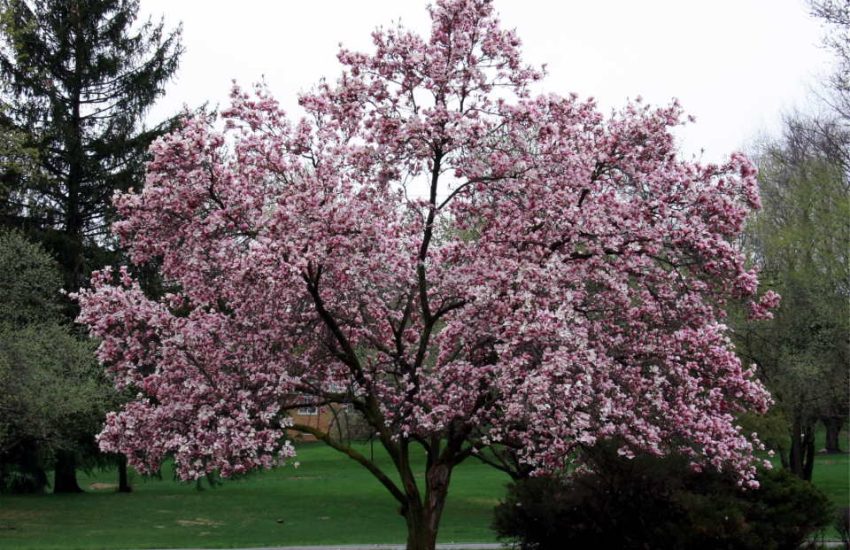How to Stake a Tree to Grow Straight
Introduction
Gardening is a delightful activity. Planting colorful flowers and different plants make you feel peaceful and create an environment where you can spend time with your family and friends. In addition to these, trees also provide a unique atmosphere to your garden. Also, if you plant evergreen plants, your garden can stay charming during winter.
Planting a tree is more difficult than planting flowers, but after a while, you do not have to deal with them as much as flowers. Flowers are easier to plant because they are small. Trees have large sizes, they must be carefully planted and supported to ensure proper growth. Otherwise, they can cause trouble later.
A properly grown tree will not cause much trouble later on. Of course, if it gets enough light, the soil stays fertile and does not get damaged from the outside. Otherwise, you need to support it for a while. Staking is the best way to grow trees straight. However, it can cause damage if not done properly.
In this article, we will talk about how to stake a tree to grow straight. Having the correct information about staking is important, or your tree can end up way more damaged than before. There is no certain staking for every tree. It differs according to situations and needs. Even materials can change accordingly. Now let’s look at these in detail.
How Far Should a Stake Be From a Tree?
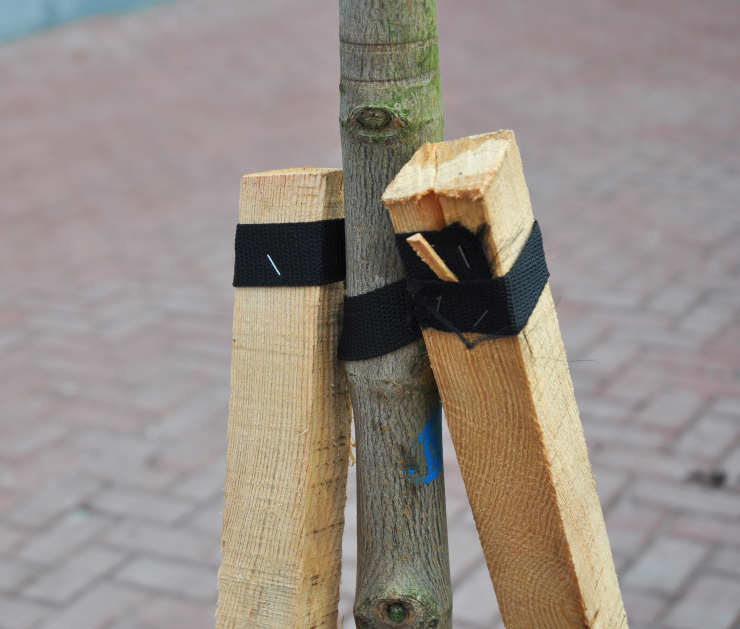
Staking is used especially for newly planted trees, but it is unnecessary. It is sometimes used to straighten older trees that are leaned. However, there are certain rules for staking correctly. The length of the stakes and how far they are from the tree are just a few points you should consider. So how exactly should it be?
You cannot expect your tree to grow properly by randomly attaching any wood to the tree. You can use wood or metal stakes, but they should be suitable for your tree’s height. They should not be very long. The longer stakes can collapse. They can even fall on a tree. Thus, the tree is damaged.
Apart from that, an important issue is how close the stakes should be to the tree. Sometimes it is thought that closer stakes placed right next to the tree will provide better support. But it is a wrong thought. A stake should be placed approximately 15 inches apart, and the tree should be tied to the stake with a non-rigid strap.
How many stakes you will use may vary—no need to use much for tiny trees. For more mature trees, you can use one on each side and support it on both sides with rope. This way, it will be much more durable. Each stake must be firmly buried in the ground. You can bury them approximately 18 inches deep.
You should not tie the straps too tight. Flexible materials should also be used. This way, your tree will not be damaged and will grow freely. The straps should be tied to the trunk at a place not exceeding 2/3 of the tree’s height. Your tree can lean worse if you tie high. If you do not want your tree to be damaged, you should pay attention to these.
Will a Tree Grow Straight if Planted Crooked?
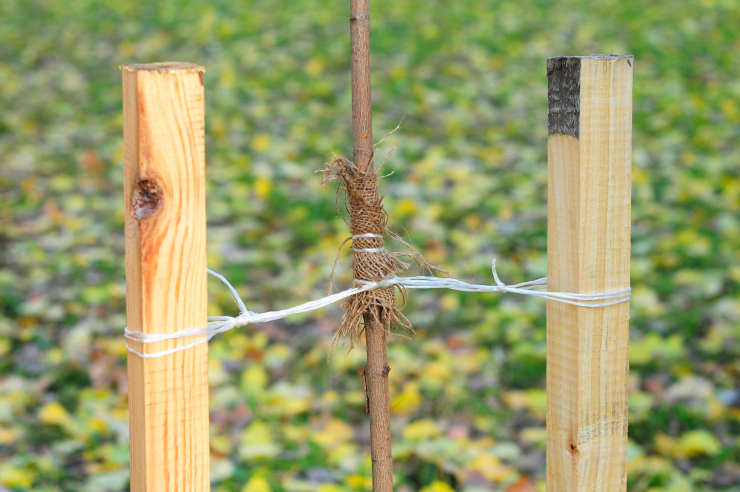
Planting trees is not an easy task. It can be tiring, especially if you’re planting multiple trees. For this reason, it is possible to plant trees crookedly without realizing it. So what happens if you plant crooked trees? If you don’t fix it, your tree will not grow straight. For this reason, it is important to try to fix it, especially before it grows.
Trees grow in a way you plant. In fact, as it grows, its weight will increase, so it will lean more towards the side where it is inclined. Of course, nobody wants to have a crooked tree in their garden. However, if the tree you planted is still young, there is a way to fix it.
Since young trees’ roots have not yet been developed, you can correct these crooked trees with certain interventions. Soil should be moistened when you do this. Dry soil will make this process more difficult. After digging the soil at the bottom of the tree, you need to pull the tree’s root up from the soil gently. Then you should lay it flat.
After you cover the root with soil again, you can fix the tree with stakes. Since the tree is still small, wooden stakes will suffice. You can use a flexible rope to tie the tree. It is possible to fix your crooked tree by intervening in this way. If you don’t interfere at an appropriate time, your tree may grow crooked and lean even more.
What Can I Use to Stake a Tree?
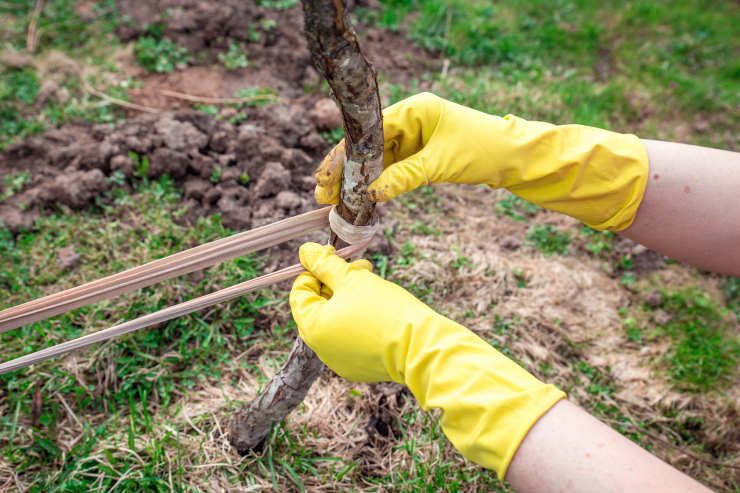
A stake can be a necessity in some cases. However, not having the right information about stake and not knowing how to do it can have bad results. It is important to choose the correct materials for the stake. Let’s look at what you can use to stake a tree and how to stake a tree to grow straight.
The most used material for the stake is wood. However, the suitability of the stake type actually depends on the size of the tree and where you live. For small, newly planted trees, wood will be enough. Metal stakes can be used for larger trees. Also, if you live in a windy place, you should use metal stakes instead of wooden ones.
Additionally, size is also important. Wooden stakes should be 2×2 inches and 5 feet tall. How many stakes you should use varies. One can be sufficient for most cases, but you can prefer more if there is potential damage to your tree. You have to drive the stake into the ground with the help of something like a sledgehammer.
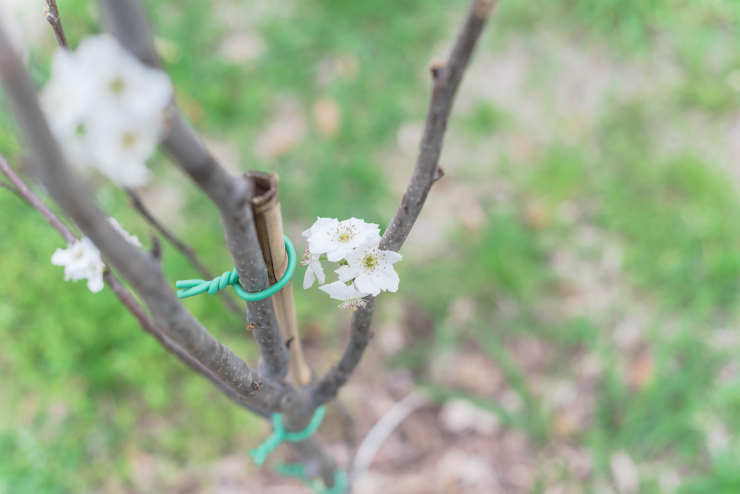
You should not use tight materials to tie the tree. This can negatively affect its development. Use more flexible materials instead. Also, leave room for the plant to grow. Do not tie the rope too tightly. Remember, you should use a stake for a maximum of 2 years. You can often observe its development and remove it when you think it is not necessary anymore.
Apart from that, mature trees can also lean. For these to improve, they must keep the stake for at least one season. Again, avoid using things like wires to tie them. Stakes may need to be buried deeper depending on the size of the tree. However, it is not easy to fix large trees. In some cases, they may not be corrected, no matter what you do.
Can a Leaning Tree Be Straightened?
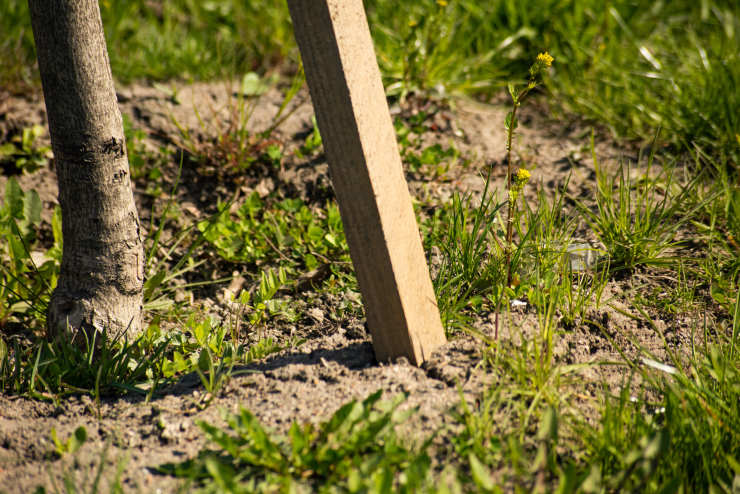
No matter how straight you plant your tree and work hard to grow it, your tree can lean for reasons beyond your control. You may have planted your tree in an area that is not suitable for it, or it can lean because of developmental issues. It is possible to straighten the tree depending on the reason and the damage.
First, you need to understand the reason behind the leaning. It may be lean because it does not get enough light. Your job is easy if it is not getting enough light because of the other trees that block the sunlight. You can prune these trees. However, if your house prevents the tree from getting light, there is not much to be done since you won’t remove your house.
The situation can be more serious if it has been damaged because of outside factors, like being exposed to a storm. Trees leaning in this way can also pose safety hazards. First, you should determine whether there is a danger of falling, and then you can start working to fix it. If the tree is leaned in a way that all the roots are in the ground, you cannot straighten this tree.
The damage to these trees is that the storm erodes the soil, making it difficult for the roots to hold on. You can keep it upright with a stake until the roots grow and hold firmly to the soil. A tree may also be lean due to its development. You can keep these trees standing with stake support.
So how to stake a tree to grow straight? If a tree has been damaged due to a storm, its roots should first be buried back into the soil. You then need to fasten a wire or rope to the tree and attach it to the stake, which stands approximately 15 feet from it.
Do All Leaning Trees Fall?
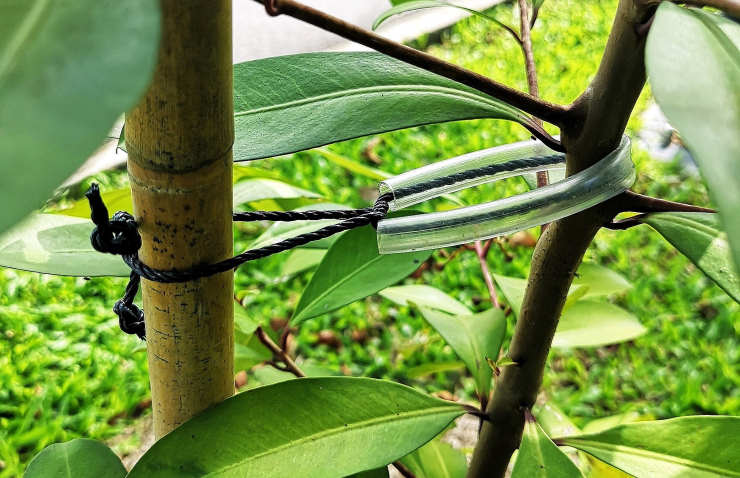
It is normal to worry about a leaning tree inside your property. It may harm you, your family, and your home. For this reason, the security hazard of a leaning tree should not be overlooked. However, not every leaning tree will fall. There are just some situations that you need to be careful about. Let’s take a look at these.
If trees lean naturally, you don’t have to worry too much. Most of the time, they don’t fall because their roots have no problem. Lean is just a part of their natural formation. It is possible to fix some of these trees with the help of staking. We talked about how to stake a tree to grow straight. So you can try these tips to prevent natural leanings if you want.
Apart from that, we also mentioned that there could be other reasons for leaning. In this case, your tree will suddenly lean. Sudden lean is something to watch out for because it indicates that there may be problems with the root of your tree. For example, it is dangerous for a tree to lean after being exposed to a storm.
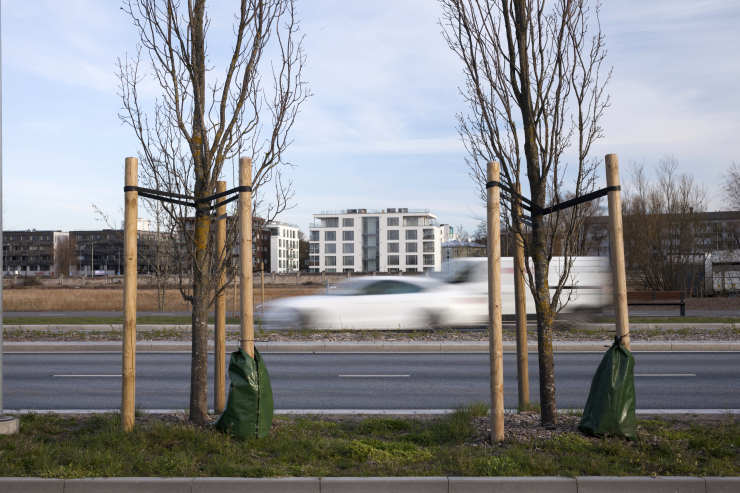
If the leaning is constantly getting worse, you should get rid of the tree because it will eventually fall. Of course, the location and size of the tree are also important. Leaning trees near the sidewalks and the places you spend with your family should be quickly cut down. You should also inform the authorities if you see trees like this on the streets.
Apart from this, some trees are lean because of the soil they grow. Although there is no damage to the tree, it can be lean because of the soil. When the tree’s roots cannot hold the soil, this can cause leaning first, and then the tree will fall. If you see that the soil is cracked, it is useful to observe the tree more carefully.
Conclusion

Staking can be necessary in some cases. It is a requirement to prevent damage to newly planted trees in some cases. Sometimes it is the right intervention to fix your damaged tree. Unfortunately, it may not be suitable for every damaged tree. Sometimes you have to say goodbye to your trees. For this, you should know in which situations the tree can recover and in which situations it cannot.
Especially severe storms cause big damage to trees. Eventually, your beloved tree may even become a danger to you. Either you cut down your tree, or you can heal it if it can be fixed with staking. Correct staking can straighten your tree. But keep in mind that if you do it wrong, it can even cause problems in a healthy tree. So you have to be very careful while doing it.
Our article talked about the importance of staking correctly and how to stake a tree to grow straight. This way, you know the most appropriate way of staking for newly planted and mature trees when necessary. You can straighten your tree without damaging it. We hope our article was useful for you. See you soon in other articles.
You may also be interested in:


